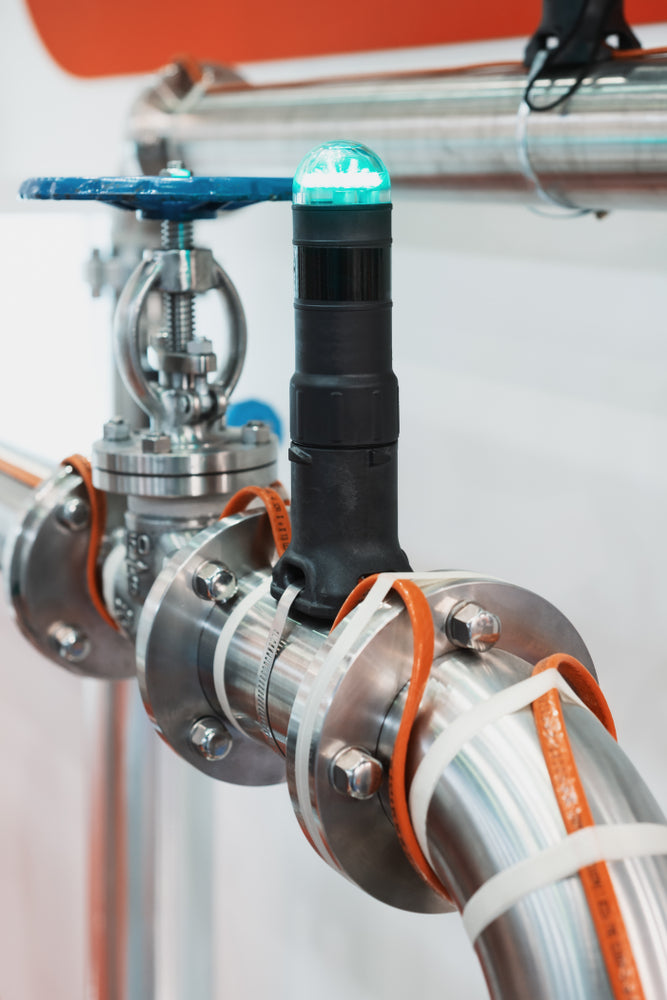You have no items in your shopping cart.
Getting started with heat tape with thermostat
Heat trace, also known as heat tape, pipe heating cable, or heat cable, is a type of electrical heating element that is used to maintain or raise the temperature of pipes and vessels. Heat trace is used in various industries, such as food and beverage processing, pharmaceuticals, chemicals, oil and gas, and more. In this blog post, we will provide guidelines on how to use heat trace with a thermostat to achieve optimal results. With a focus on the benefits of having adjustable thermostat control with your heat trace system and allowing it to be self-regulating.

Installing Heat Trace
Heat trace can be installed in a variety of ways, depending on the application. For example, heat trace can be installed on the exterior of pipes using insulation to protect the pipe from freezing temperatures. Alternatively, heat trace can be installed inside pipes using an adhesive backing. When installing heat trace, it is important to ensure that the heating element is not in direct contact with any flammable materials. And if necessary, consult a professional for installation to ensure that everything is installed correctly.
Using Heat Trace with a Thermostat
To use self-regulating heat trace with a thermostat, you will need to purchase a compatible thermostat. Once you have obtained a thermostat, follow these steps:
1. Mount the thermostat in a location where it can accurately sense the temperature of the pipe or vessel that you are trying to maintain or raise.
2. Connect the thermostat to the heat trace using low-voltage wiring.
3. Set the desired temperature on the thermostat.
4. Turn on the power to the heat trace at the breaker box or fuse panel.
5. Monitor the system periodically to ensure that it is functioning properly.

What to Avoid When Installing Heat Trace
One common mistake when installing heat trace is not following the manufacturer's instructions. It is important to read and follow the installation instructions carefully to avoid any problems. Another mistake that people often make is not using enough insulation. When installing heat trace, be sure to use plenty of insulation to protect the pipe from the cold weather. And finally, be sure to properly ground the heat trace system. Failing to ground the system properly can cause electrical problems and be unsafe.
Benefits of Using Heat Trace
There are many benefits to using heat tape instead of outdated methods, such as steam tracing or hot water tracing. For example, heat tape is more energy efficient than steam tracing because it only heats the portion of the pipe or vessel that needs to be heated—not the entire system.
Heating tape is not only energy efficient, but it is also easier to install and maintain. It can be installed in hard-to-reach areas or on irregularly shaped vessels. And with adjustable thermostat control, it allows for more precise temperature control.
Additionally, heat tape or heat cables are more durable than hot water tracing because they can withstand freezing temperatures without cracking or breaking as hot water piping would. This durability can go a long way, especially in an environment with extreme temperature changes. This heat trace system will allow you total control over your freeze protection.
Finally, heat trace is less expensive than both steam tracing and hot water tracing because it requires less maintenance and has a longer lifespan. When you can easily apply heating tape across your entire system, and it requires less maintenance, you spend less time focusing on temperature changes and more time being able to focus on the rest of your production.
Heat Trace to Prevent Frozen Pipes
Installing and using heat trace is a simple and effective way to maintain or raise the temperature of pipes and vessels in various industries. If you follow the guidelines outlined in this blog post, you can use heat trace with a thermostat to achieve optimal results. Frozen pipes can quickly shut down the processes of many industries resulting in lost time and money. Utilizing heat trace with a thermostat can increase your output, improve the efficiency of your system, and save you time and money.













